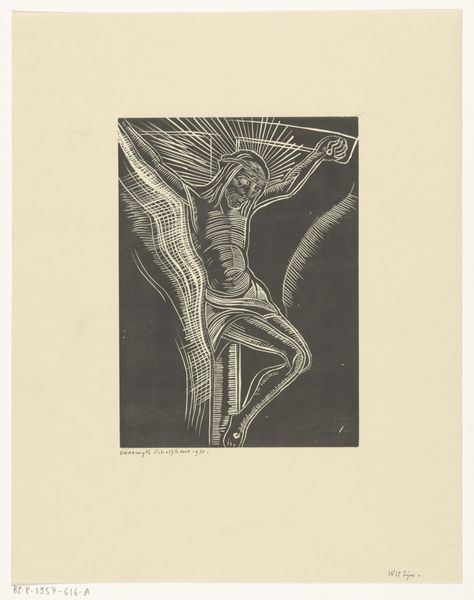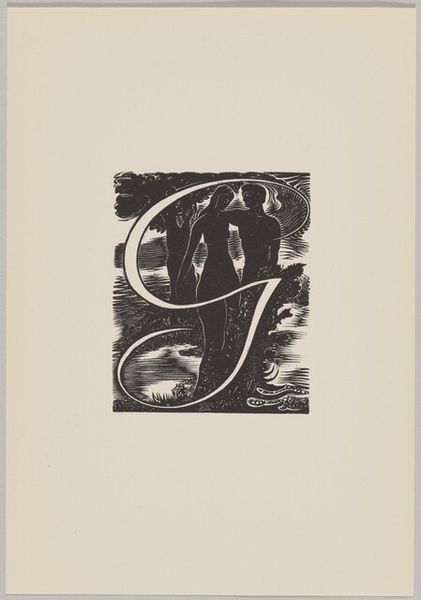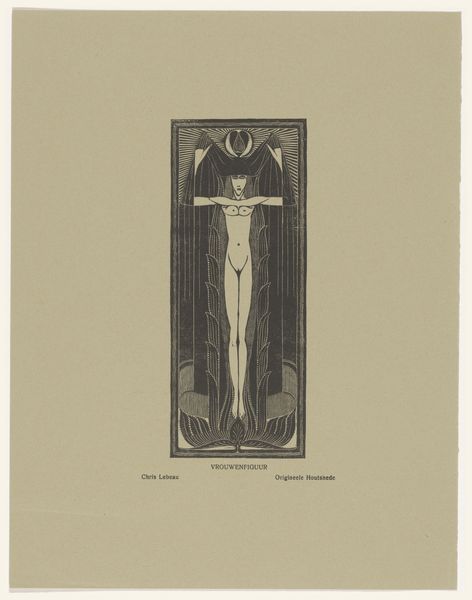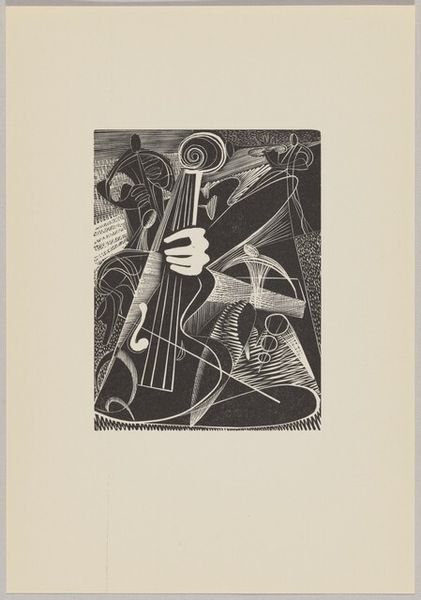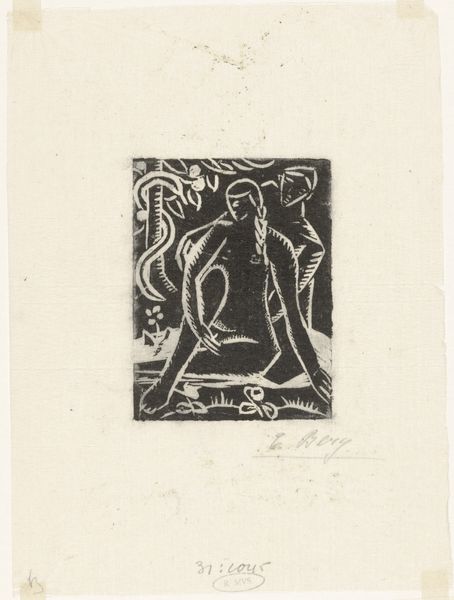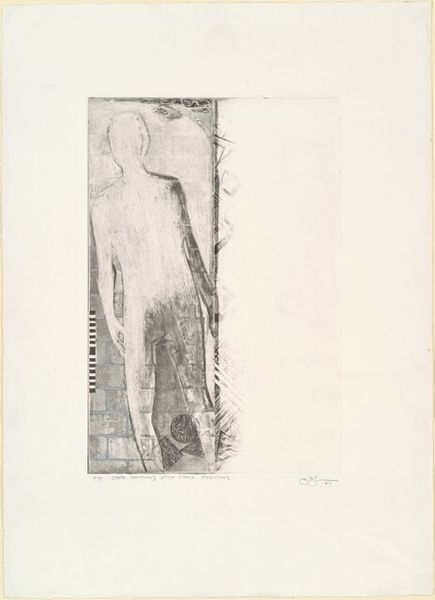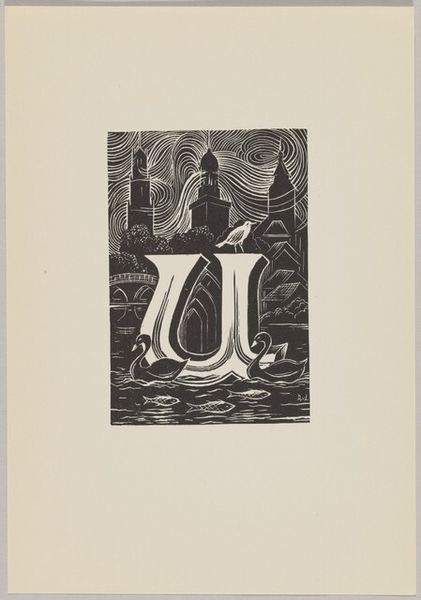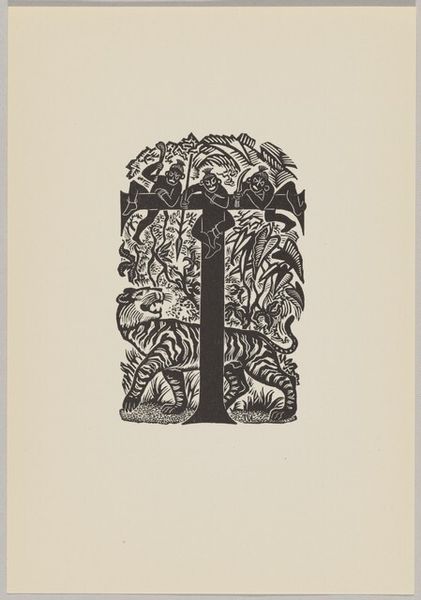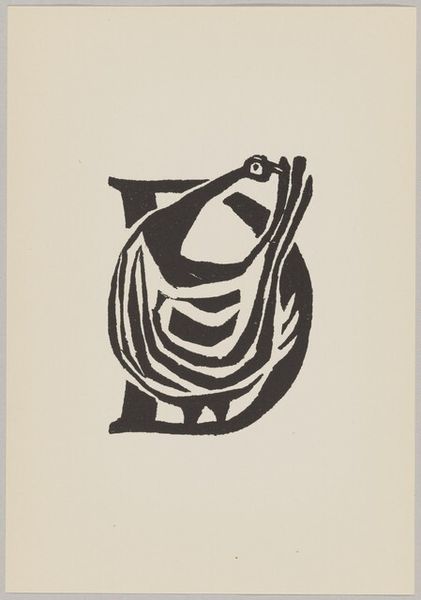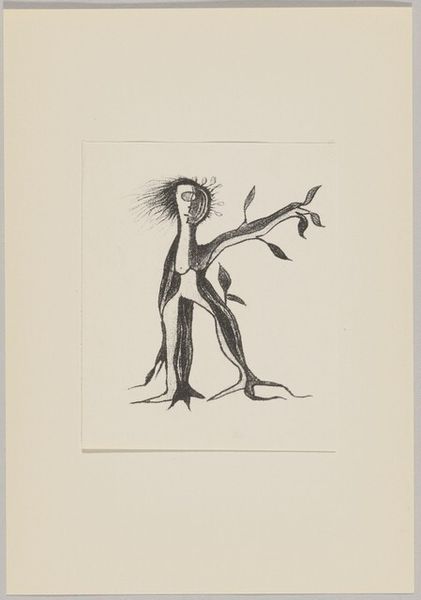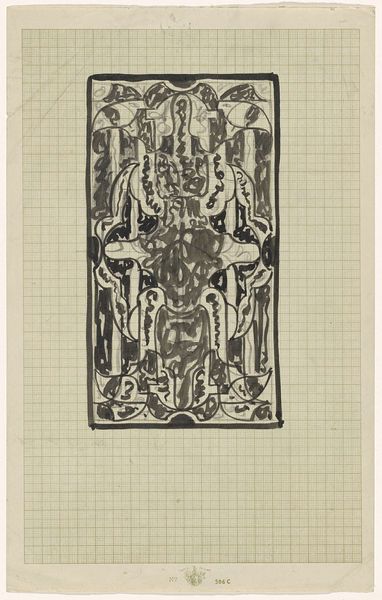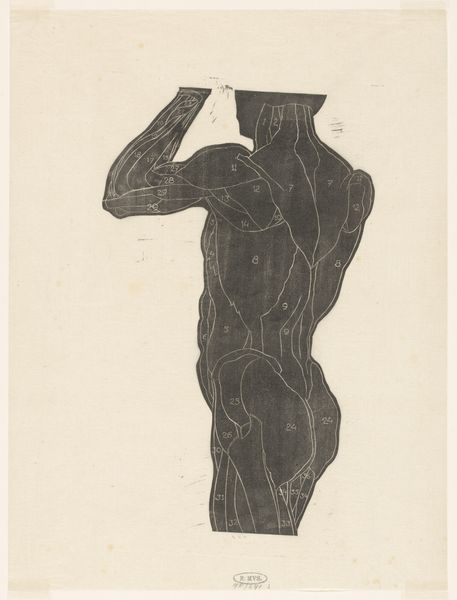
print, linocut
# print
#
linocut
#
figuration
#
linocut print
#
nude
#
erotic-art
Dimensions: image: 9.3 x 6.1 cm (3 11/16 x 2 3/8 in.) sheet: 19.9 x 13.9 cm (7 13/16 x 5 1/2 in.)
Copyright: National Gallery of Art: CC0 1.0
Editor: So, this linocut print is titled "Letter 'Y'," possibly from 1953, by Pam Georg Rueter. The stark contrast of black and white immediately grabs me, and I'm intrigued by the way the human figure becomes part of the graphic composition. How do you interpret this work through its form and materiality? Curator: Immediately, I see a sophisticated play with positive and negative space. Note how the figure performs a handstand to create the form of the letter “Y”. The linocut technique, with its bold lines, lends itself perfectly to this strong geometric structure. The materiality is integral; the starkness of the medium emphasizes the division between figure and ground. The subtle variations in pressure applied to the linocut further contribute to the overall dynamism. Editor: That's interesting. So, it's the medium itself, linocut, with the black and white contrast and bold lines, that heightens the geometric forms and its abstraction of the body. But then, the smaller figures kind of disappear and disrupt this idea? Curator: Exactly. Those smaller figures almost act as a form of visual echo, underscoring the repetition of form and the constructed nature of the image. Their receding placement and lesser intensity—consider the reduced black ink applied, and their relative blur—generate depth while further echoing the dynamism inherent in the composition of forms and in this instance the form of a letter. Do you note how the figure is integrated with its surface and reflection? The work’s depth underscores its formalism. Editor: Yes, I see how their placement establishes depth, while simultaneously amplifying the letter's dynamism and reinforcing the graphic design. So the linocut prints are not only bold but precise and meticulous, each formal element and depth creating different functions to the piece’s aesthetic whole. Curator: Precisely! A detailed visual assessment reveals the work to be much more complex when appreciating its basic formalism.
Comments
No comments
Be the first to comment and join the conversation on the ultimate creative platform.
